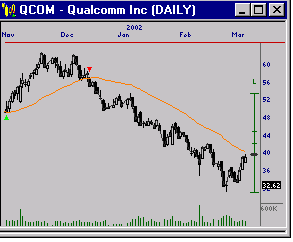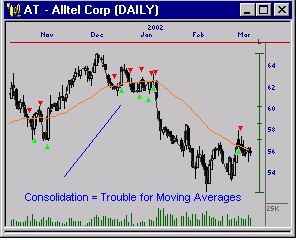Moving Averages Help Us Identify Trend ReversalsOne of the old axioms of technical analysis is that 'the trend is your friend'. This holds true, as long as you trade in the direction of the trend. However, your 'friend' has two faces, and can turn on you to eliminate profits (and your friendship!). Trend reversals can occur at any time and one of the important skills a trader must possess is the ability to identify a reversal. It is easy to exit a position too early if we over-anticipate a trend reversal, and just as easy to watch our profits evaporate if we are too slow to exit the trade. The use of a moving average is an excellent tool to help us identify trend reversals. By plotting the proper moving average on your charts, you need only to watch for price to clearly penetrate the moving average to know that a reversal is likely. There are two kinds of moving averages that are common to technical analysis - the simple moving average and the weighted moving average. As a rule of thumb, keep in mind that weighted moving averages are more reactive to the latest price. Our first chart shows a good example of how moving averages assist us by not over-reacting to counter-trend bars. Even though price action moves against the trend, the moving average tells us that the current trend is still valid. As long as the security is in trend, the moving average is relevant. If a security begins to consolidate (move sideways in a tight range), the relevance of a moving average is nullified. This is important to remember if you chose to incorporate the use of a moving average in your trading. It is not until we see a clear breakout of the consolidation pattern that the moving average becomes relevant to us again. Some important things to remember about moving
averages: |

QCOM gives us a good example of a moving average helping
in identifying trend continuation

As AT consolidates, the relevance of the moving average
is nullified
|